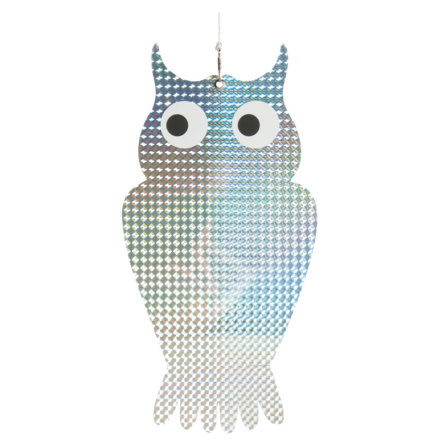Dreiebord: Din Komplekse Ressurs for Avansert Maskinering og Presisjonsarbeid
I den moderne industrielle verden, hvor nøyaktighet og effektivitet er avgjørende for suksess, spiller dreiebordet en fundamental rolle i et bredt spekter av maskineringsprosesser. Dette allsidige verktøyet, som muliggjør rotasjon av et arbeidsstykke rundt en akse, er ikke bare en enkel komponent, men snarere en integrert del av avanserte produksjonssystemer. Vår omfattende guide dykker dypt inn i dreiebordets verden, og utforsker dets mangefasetterte natur, fra de grunnleggende prinsippene til de mest sofistikerte bruksområdene. Vi vil belyse de ulike typene dreiebord som er tilgjengelige, deres spesifikke fordeler og ulemper, samt de kritiske faktorene som må vurderes ved valg og implementering. Målet vårt er å gi deg en helhetlig forståelse som vil gjøre deg i stand til å optimalisere dine maskineringsoperasjoner og oppnå enestående resultater.
Forstå Dreiebordets Kjernefunksjoner og Betydning i Moderne Industri
Kjernen i et dreiebord sin funksjonalitet ligger i dets evne til å rotere et arbeidsstykke med høy presisjon. Denne tilsynelatende enkle handlingen åpner for en rekke komplekse maskineringsoperasjoner som ville vært vanskelige, om ikke umulige, å utføre på annen måte. Fra enkel indeksering for boring av flere hull i en sirkel til kontinuerlig rotasjon for komplekse kurvefresingsoperasjoner, er dreiebordet en nøkkelkomponent i mange moderne produksjonsprosesser. Dets betydning strekker seg over et bredt spekter av industrier, inkludert metallbearbeiding, trebearbeiding, plastproduksjon, og til og med innen vitenskapelig forskning og utvikling. Ved å muliggjøre fleraksemaskinering og komplekse geometrier, bidrar dreiebordet direkte til økt produktivitet, reduserte syklustider og forbedret kvalitet på de ferdige produktene. Videre spiller det en viktig rolle i automatisering av maskineringsprosesser, hvor det kan integreres sømløst med CNC-maskiner og robotikk for å skape effektive og fleksible produksjonsceller.
De Grunnleggende Prinsippene Bak Dreiebordets Virkemåte
For å fullt ut forstå fordelene og bruksområdene til et dreiebord, er det essensielt å ha en solid forståelse av de grunnleggende prinsippene som styrer dets virkemåte. I sin enkleste form består et dreiebord av en roterende plate eller et bord som er montert på en base. Denne platen kan roteres manuelt eller ved hjelp av en motor, og den er utstyrt med mekanismer for å feste og sikre arbeidsstykket. Nøyaktigheten i rotasjonen er kritisk, og avhengig av bruksområdet kan dette oppnås gjennom ulike metoder, inkludert presisjonslagre, snekkedrev, kuleomløpskruer og direkte drevne motorer. Indeksering, som er evnen til å posisjonere bordet i nøyaktige vinkler, er en annen viktig funksjon. Dette kan oppnås mekanisk ved hjelp av indekseringsplater og låsepinner, eller elektronisk via posisjonskontrollsystemer i CNC-styrte dreiebord. Stivheten og stabiliteten til dreiebordet er også avgjørende for å sikre nøyaktig maskinering, spesielt under tunge belastninger og høye skjærehastigheter. Derfor er konstruksjonen og materialvalget av dreiebordet av stor betydning for dets ytelse og levetid.

Dreiebordets Sentrale Rolle i Effektivisering av Maskineringsprosesser
Integrasjonen av et dreiebord i maskineringsprosesser har en transformativ effekt på effektiviteten. Ved å tillate at arbeidsstykket roteres til forskjellige vinkler uten at det må flyttes eller omrigges, reduseres betydelig tiden som brukes på oppsett og håndtering. Dette resulterer i kortere syklustider og økt gjennomstrømning. Spesielt i komplekse maskineringsoperasjoner som krever flere bearbeidinger fra forskjellige sider, eliminerer bruken av et dreiebord behovet for flere oppspenninger, noe som ikke bare sparer tid, men også minimerer risikoen for feil som kan oppstå ved gjentatt posisjonering. I CNC-maskiner muliggjør dreiebordet simultan fleraksemaskinering, hvor både verktøyet og arbeidsstykket beveger seg samtidig. Dette åpner for produksjon av komplekse geometrier og konturer med høy presisjon og overflatefinish. Automatiske verktøyvekslere kombinert med dreiebord kan ytterligere optimalisere prosessen ved å tillate kontinuerlig drift uten manuell intervensjon. Samlet sett bidrar dreiebordet til en mer strømlinjeformet, nøyaktig og produktiv maskineringsprosess.
En Detaljert Klassifisering av Ulike Typer Dreiebord og Deres Spesifikke Egenskaper
Mangfoldet av dreiebord som er tilgjengelig på markedet reflekterer de ulike behovene og kravene i ulike maskineringsapplikasjoner. En grundig forståelse av de forskjellige typene og deres spesifikke egenskaper er avgjørende for å kunne velge det mest passende dreiebordet for en gitt oppgave. Vi vil nå utforske en detaljert klassifisering av dreiebord basert på deres konstruksjon, driftsmekanisme og bruksområder.

Manuelle Dreiebord: Enkelhet og Pålitelighet for Grunnleggende Operasjoner
Manuelle dreiebord representerer den mest grunnleggende formen for roterende bord. De kjennetegnes ved at rotasjonen og posisjoneringen av bordet utføres manuelt ved hjelp av en sveiv eller et håndhjul. Disse bordene er ofte utstyrt med en gradert skala og en noniusskala for å muliggjøre nøyaktig vinkelinnstilling. Låsemekanismer, som for eksempel klemmeskruer eller bremser, brukes for å sikre bordet i ønsket posisjon. Manuelle dreiebord er relativt enkle i konstruksjonen, noe som gjør dem pålitelige og kostnadseffektive. De er ideelle for operasjoner som krever enkel indeksering, lett fresing eller boring hvor høy grad av automatisering ikke er nødvendig. Selv om de ikke har den samme hastigheten og presisjonen som CNC-styrte dreiebord, finner manuelle dreiebord fortsatt bred anvendelse i verksteder, vedlikeholdsavdelinger og i utdanningsøyemed hvor fleksibilitet og enkel betjening er viktigere enn høy produktivitet.
Fordeler og Begrensninger ved Bruk av Manuelle Dreiebord
De primære fordelene med manuelle dreiebord inkluderer deres lave anskaffelseskostnad, enkle betjening og vedlikehold, samt deres uavhengighet av eksterne strømkilder eller komplekse styringssystemer. De er robuste og tåler ofte tøffe arbeidsmiljøer. Imidlertid har de også begrensninger. Prosessen med manuell posisjonering og låsing kan være tidkrevende og mindre nøyaktig sammenlignet med automatiserte systemer, spesielt ved repeterende operasjoner eller når svært nøyaktige vinkelinnstillinger kreves. Videre er de ikke egnet for komplekse maskineringsoperasjoner som krever kontinuerlig eller synkronisert bevegelse med andre maskinaksjer.

Maskindrevne Dreiebord: Økt Effektivitet og Presisjon for Krevende Oppgaver
Maskindrevne dreiebord representerer et betydelig steg opp fra manuelle dreiebord når det gjelder ytelse og funksjonalitet. Disse bordene er utstyrt med en motor som driver rotasjonen, noe som muliggjør raskere og mer presis posisjonering. Driftsmekanismen kan variere, men vanlige løsninger inkluderer snekkedrev, tannhjuldrift eller direktedrevne motorer. Maskindrevne dreiebord er ofte integrert med digitale avlesningssystemer (DRO) eller posisjonsenkodere som gir nøyaktig tilbakemelding om bordets posisjon. Dette gjør dem ideelle for operasjoner som krever repeterbar nøyaktighet og effektiv indeksering. De brukes ofte i forbindelse med fresemaskiner, boremaskiner og andre verktøymaskiner hvor rask og nøyaktig posisjonering av arbeidsstykket er avgjørende for produktiviteten og kvaliteten på det ferdige produktet.
Ulike Driftsmekanismer og Deres Innvirkning på Ytelse
De forskjellige driftsmekanismene som brukes i maskindrevne dreiebord har en direkte innvirkning på deres ytelse. Snekkerdrev er kjent for sin høye utveksling, som gir god presisjon og selvlåsende egenskaper, men de kan ha noe slakk og lavere effektivitet. Tannhjuldrift tilbyr høyere effektivitet og mindre slakk, men krever ofte mer komplekse mekanismer for å oppnå høy presisjon. Direktedrevne motorer, som er koblet direkte til bordet uten noen mekanisk overføring, gir den høyeste presisjonen, hastigheten og dynamikken, men er generelt dyrere. Valget av driftsmekanisme avhenger av de spesifikke kravene til applikasjonen, inkludert ønsket nøyaktighet, hastighet, belastningskapasitet og kostnad.

CNC-Styrte Dreiebord: Integrasjon og Synkronisering for Kompleks Fleraksemaskinering
CNC-styrte dreiebord representerer det ypperste innen roterende bordteknologi. Disse bordene er designet for å integreres sømløst med CNC-maskiner og styres av maskinens numeriske kontrollsystem. Dette muliggjør synkronisert bevegelse mellom dreiebordet og maskinens andre akser, noe som er avgjørende for kompleks fleraksemaskinering. CNC-dreiebord er utstyrt med høypresisjonsdrev, posisjonsenkodere og avanserte styringssystemer som sikrer ekstremt nøyaktig posisjonering og repeterbarhet. De kan utføre både indeksering ved nøyaktige vinkler og kontinuerlig rotasjon med presis hastighetskontroll. Dette åpner for produksjon av komplekse geometrier, undersnitt og spiralformede konturer med høy effektivitet og overflatefinish. CNC-dreiebord er uunnværlige i moderne produksjonsmiljøer som krever høy presisjon og automatisering.
Fordeler med CNC-Integrasjon og Muligheter for Fleraksemaskinering
Den primære fordelen med CNC-integrasjon er muligheten for fleraksemaskinering. Ved å synkronisere bevegelsen til dreiebordet med lineære akser (X, Y, Z), kan komplekse operasjoner utføres i én oppspenning. Dette reduserer antall oppspenninger som kreves, minimerer risikoen for feil, forbedrer nøyaktigheten og reduserer syklustidene betydelig. CNC-styrte dreiebord kan også programmeres til å utføre avanserte maskineringsstrategier, som for eksempel 4-akse simultan fresing eller 5-akse maskinering når de kombineres med et tiltbart hode. Dette gir en enorm fleksibilitet og muliggjør produksjon av deler med svært komplekse former og toleranser. Videre kan CNC-styringen integreres med CAM-programvare for å generere optimaliserte maskineringsbaner og sikre effektiv materialfjerning.
Indekseringsbord: Spesialisert for Nøyaktig Vinkelposisjonering

Indekseringsbord er en type dreiebord som er spesielt designet for å posisjonere et arbeidsstykke i diskrete vinkler med høy nøyaktighet. De er ideelle for operasjoner som krever boring, fresing eller gjenging av hull i faste intervaller rundt et senter. Indeksering kan oppnås mekanisk ved hjelp av indekseringsplater med presist maskinerte hakk eller hull, som låses ved hjelp av en pinne eller en klemme. Mer avanserte indekseringsbord kan være maskindrevet eller CNC-styrt, noe som gir raskere og mer fleksibel vinkelinnstilling. Nøyaktigheten til et indekseringsbord er kritisk, og de er ofte konstruert med høypresisjonskomponenter for å sikre repeterbar posisjonering. De finner bred anvendelse i produksjon av deler med komplekse hullmønstre eller geometrier som krever nøyaktig vinkelorientering.
Mekaniske og Elektroniske Indekseringsmekanismer

Mekaniske indekseringsmekanismer bruker fysiske inngrep, som for eksempel en pinne som låses i presist maskinerte hakk på en indekseringsplate, for å oppnå nøyaktig vinkelposisjonering. Disse systemene er enkle, pålitelige og krever ingen ekstern strømkilde. Elektroniske indekseringsmekanismer, som finnes i maskindrevne og CNC-styrte indekseringsbord, bruker posisjonsenkodere og styringssystemer for å oppnå rask og nøyaktig vinkelinnstilling. Disse systemene tilbyr større fleksibilitet i valg av vinkler og kan ofte programmeres til å utføre komplekse indekseringssekvenser. Valget mellom mekaniske og elektroniske mekanismer avhenger av kravene til nøyaktighet, hastighet og fleksibilitet i applikasjonen.
Rullelagerdreiebord: For Høy Presisjon og Lav Friksjon
Rullelagerdreiebord er konstruert med presisjonsrullelagre i rotasjonsaksen for å sikre jevn bevegelse, høy nøyaktighet og lav friksjon. Disse bordene er ideelle for applikasjoner som krever fine overflatefinisher og nøyaktige posisjoneringsoperasjoner. Rullelagrene bidrar til å minimere slakk og vibrasjoner under drift, noe som er spesielt viktig ved høyhastighetsmaskinering eller ved bearbeiding av sensitive materialer. Rullelagerdreiebord finnes i både manuelle, maskindrevne og CNC-styrte varianter, og de brukes ofte i instrumentering, optikk og presisjonsmaskinering hvor selv små unøyaktigheter kan ha betydelige konsekvenser for kvaliteten på sluttproduktet.
Fordeler med Rullelagerkonstruksjon i Presisjonsapplikasjoner
Den primære fordelen med rullelagerkonstruksjon er den høye presisjonen og lave friksjonen som oppnås. Dette resulterer i jevnere rotasjon, redusert slitasje og forbedret nøyaktighet. Den lave friksjonen gjør det også mulig å oppnå finere justeringer og mer sensitive bevegelser, noe som er avgjørende i presisjonsapplikasjoner. Videre bidrar rullelagrene til å absorbere radiale og aksiale krefter effektivt, noe som øker stabiliteten og levetiden til dreiebordet.
Luftlagerdreiebord: For Ekstrem Nøyaktighet og Vibrasjonsfri Drift
Luftlagerdreiebord representerer den ypperste teknologien innen roterende bord for applikasjoner som krever ekstrem nøyaktighet og vibrasjonsfri drift. I disse bordene er den roterende platen støttet av et tynt lag med trykkluft i stedet for mekaniske lagre. Dette eliminerer all fysisk kontakt mellom de bevegelige delene, noe som resulterer i null





